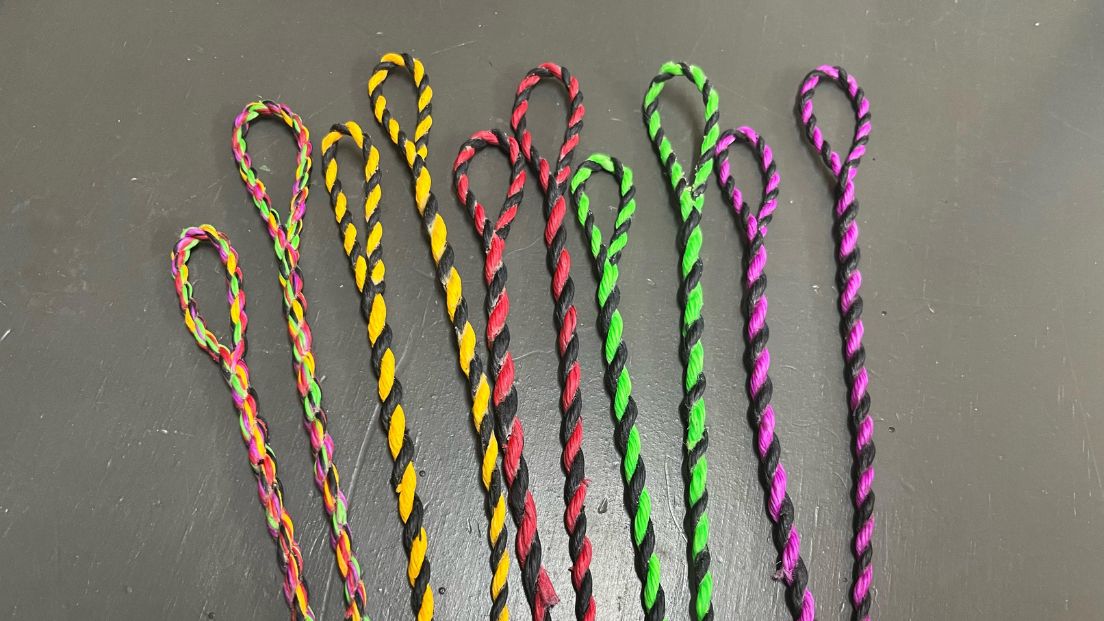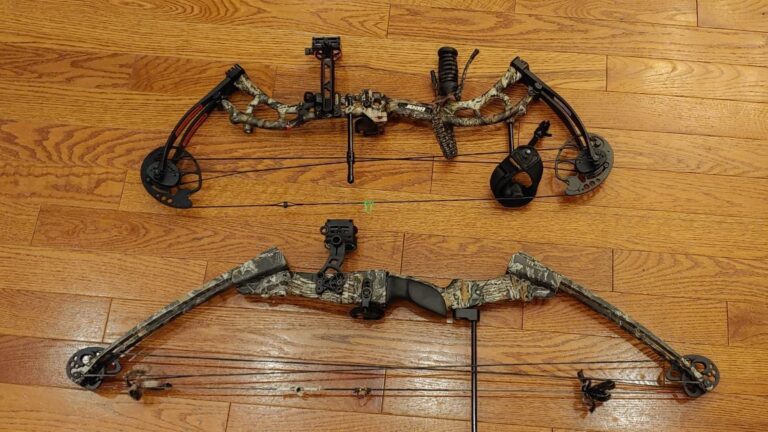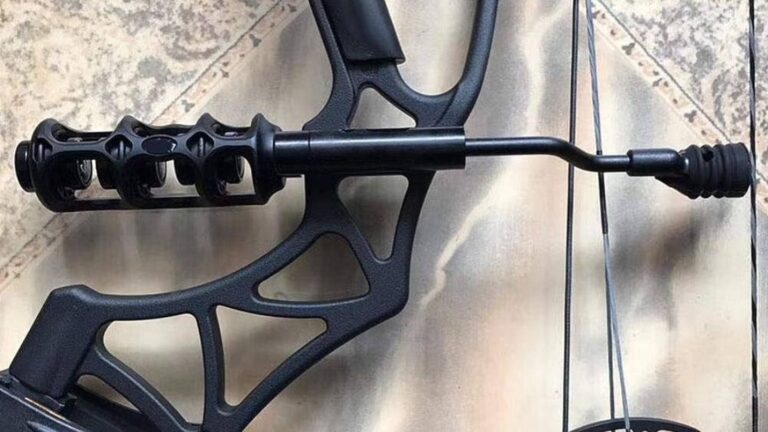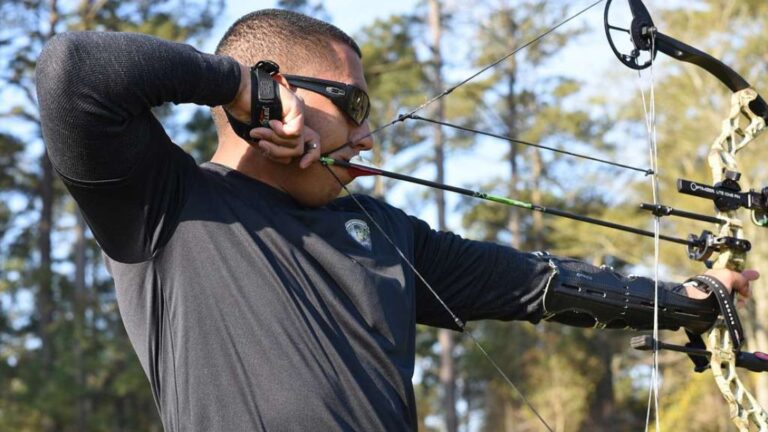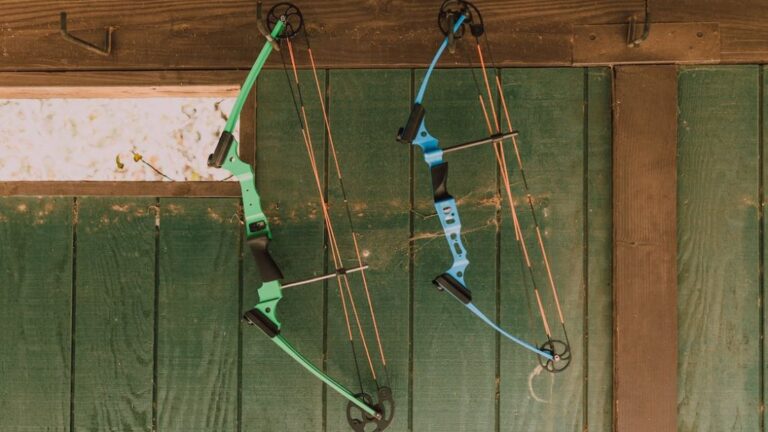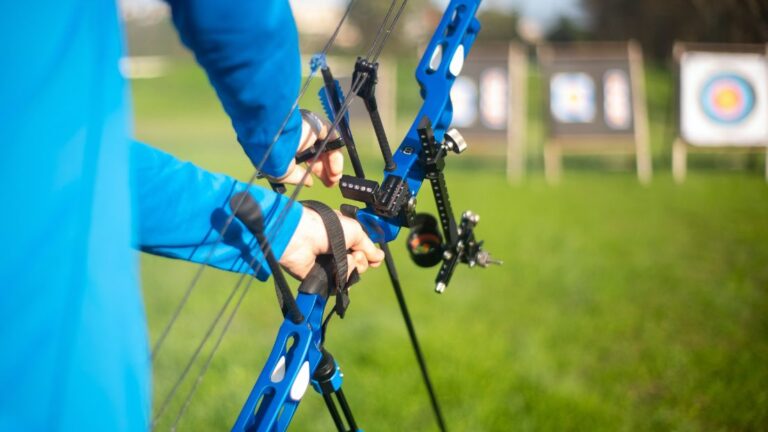About the Author: Austin Murphy is a skilled hunter with a passion for archery. With 17+ years of experience, he possesses extensive knowledge of various archery equipment, including the compound bow, recurve bow, and crossbow. His expertise in these accessories allows him to pursue his love for archery while honing his hunting skills with precision and finesse. As participant in NFAA and ASA competitions, Austin own around 8 Recurve Bows, 6 Compound Bows, and 2 Crossbows.
The first thing that you need to understand is that a compound bow is quite different from a recurve bow as its bowstrings are connected to the limbs through cams pulleys (also known as pulleys). Compound bows provide more accuracy and power from a larger distance with less physical effort.
There’s another difference that the compound bows are in traditional style but their strings are more flexible and durable. In these bows, a single strand-like material is used to make a bowstring, smaller bows will draw low draw weights offering good performance at lower drawing speeds. It is also easier to handle for novice archers.
However, twists in a compound bow are also important during archery. And being an archer, the 1st question that comes to mind when you have a compound bow is how many twists are in a compound bow string required for better archery?
Well, the answer is, generally compound bow strings have 18 to 30 twists or 1/2.5 to 3/4 twists per inch. A bowstring that has few twists can make the arrow fly erratically, oppositely too many twists cause more challenging to draw on a bow.
Some archers shoot with 20-24 twists in their strings which is a good mix of strength and stability without making the bow to pressure to draw. Some shooters prefer fewer twists actually it depends on their personal choice and preferences.
Read More: How to Tune a Compound Bow
Benefits of Having More or Less Twist in your Compound Bow String
We understand that novice archers found it confusing how many twists should be in a Compound Bow. Should there be more twists or fewer twists?
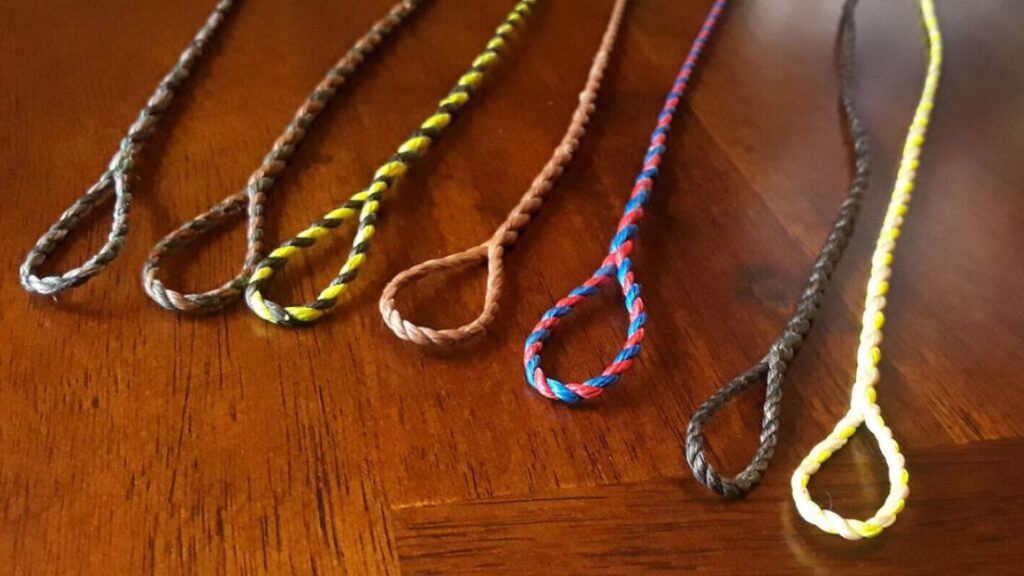
You need to know that twisting a bowstring can’t be ignored as it sticks the bundle of strands together, after creeping it shortens the string moreover it also minimizes peep rotation.
To provide a suitable answer we have compared the effects of more and less twist in a compound bow.
You might be interested in: Learn how to adjust the draw weight of a compound bow to suit your preferences in our guide on Adjusting Compound Bow Draw Weight.
More Twist (3/4 twists per Inch)
Too many twists can cause vibration and inaccuracy, while too few twists could decrease the shooting power of your bow will slow down the bow but produce much less noise.
More twists on the string may put too much tension on the limbs, resulting in damage over time to the cams and bow limbs.
- Shorter Brace Height: More twists to the compound bow provide a shorter ‘Brace Height’ that’s the distance between the bow and the bowstring.
- Faster Arrow Speed: More twists can give faster and more accurate arrow speeds.
- Reduced Hand Shock and Vibration: More twists also put less pressure on the person’s body like it, reducing hand shock and vibration during shooting.
Less Twist (1/2 twists per Inch)
A few twists could decrease the shooting power of your bow twist in a compound bow have different effects as following
- Longer Brace Height: Less twist provides longer brace height
- Enhanced Accuracy and Forgiveness: It improves archery with accuracy
- Reduced Noise: Fewer twists mean less noise.
Read More: Can You Shoot a Compound Bow Without a Release?
Changing the Number of Twists in your Compound Bow
Too many twists reduce performance and sometimes also lead to a string that is more prone to stretching, tangling, or even getting unstrung. Therefore, there is no specific amount of twists still 1/2 to 3/4 twists per inch is strongly recommended.
Things to Remember When Choosing the Best String
There are several strings available in the market to gain your attention, all proving themselves best with a lot of different qualities. With such a large number of choices it can be difficult to choose ” the right string “for your bow, so here are the major factors you should keep in mind before getting a string.
Material Texture
In old times compound bows were used for hunting. Different materials can be used as its string like hair, silk sinew hemp, or even natural fiber like vegetable fibers. In modern compound bow strings are made from composite fibers like Vectran, and Dyneema, or some are made of polyethylene fiber which provides high strength
The materials used for compounds are BCY 452X, BCY Trophy, BCY 8190, BCY X String, and Angel Majesty.
Texture
The texture of the string transfers energy from the bow to the arrow. String with a smooth texture is faster, more reliable, and more trustworthy other than rough, grooved strings. Some archers also like soft or grippier bow strings which provide a better grip against the bow.
Diameter
The string’s diameter plays an important role in transforming energy from the bow to the arrow. Larger strings tend to be slower but heavier that’s also the reason some archers like a diameter of 0.4mm.
Price
On average a compound bow can cost $50-$300 depending on the material and quality of the string prices can vary high. Higher-quality strings are expensive because of better performance and durability.
Durability
Compound bow strings can last long if properly used and maintained; most manufacturing companies ensure it lasts 2 to 3 years. However, compound bow strings can be replaceable.
Read More: How Long Does a Compound Bow Last?
Importance of Bowstring Strands
There are 20 to 24 bowstring strands of compound bow which can’t be ignored as most of the target shoot depends upon its following quality.
Strength and Durability:
are one of the basic qualities of bowstring strands that’s also the reason most manufacturers use composite fibers like Vectran and Dyneema as it carries both strength and durability.
Load Distribution
The style in which an archer grip and releases the string of a bow causes the arrow to flex during the bow’s power stroke and target in the majority of cases the string has to leave just the middle finger which causes load distribution between the finger and bow strings.
Consistent Performance
Today’s compound bows are designed to perform with more accuracy and consistency as they can achieve targeting ranges beyond 40 yards adding a lifetime of 2,000 – 2,500 shots.
You might be interested in: Find out whether it’s safe to draw a compound bow without an arrow in our article on Drawing a Compound Bow Without an Arrow.
Arrow Speed and Efficiency
When we are talking about bows, “fast targeting ” means the “ability to shoot an arrow at greater speed on target “. Compound bows have the ability to shoot an arrow with speeds of 250 to 370 feet per second.
String Noise and Vibration
String noise and vibration in the string are usually caused by “Gravitational tension” between the “balance point” of the archer and bow. If energy is not released with the arrow it causes vibration through the bow ultimately causing hand shock. To avoid such things use a small amount of limb savers to your bow limbs.
Dampening:
There are different types of archery dampers such as a rubber block, screwed to the bow which reduces bow noise by dampening vibrations during archery when an arrow is released. The main objective of dampers is to completely eliminate or reduce possible vibrations in the bow.
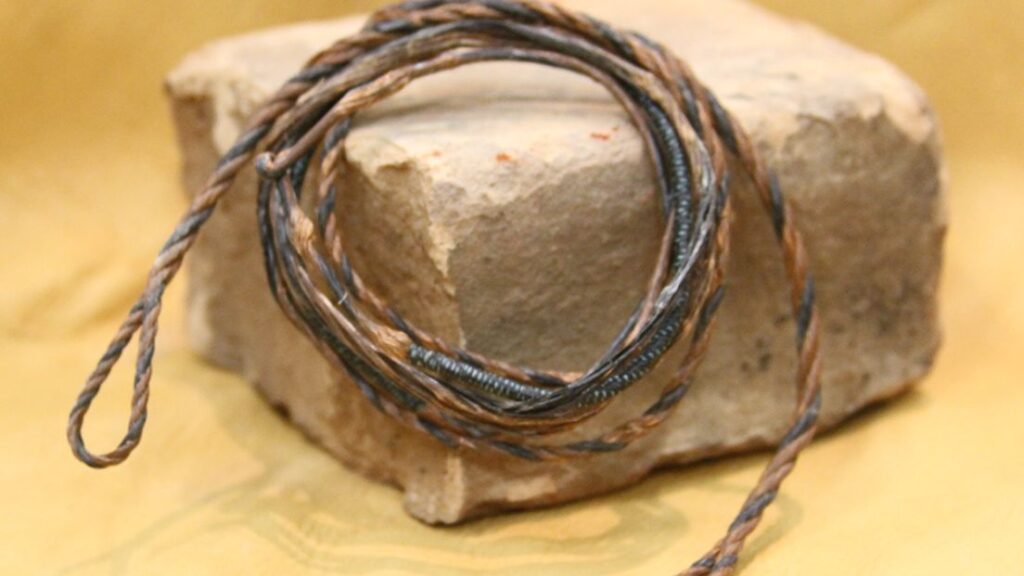
Read More: How Much Does It Cost to Tune a Compound Bow?
Different Twist Ranges in a Compound Bow String
Twisting the bowstring makes it easier to pull back on it and hold it in place while you aim and shoot an arrow depending on your needs and preferences as an archer.
2 – 3 inches
For beginners to archery, it’s suggested to start with the standard twist range of 2-3 inches. In regards to errors or technique, this twist range is less dangerous and more forgiving. For practice, if your shooting isn’t perfect, release the string before the full draw in this way bows can shoot accurately.
4 inches or higher
For a good archer, who wants to advance the twist of his compound bow to achieve better technique and skill level, 4-inch or a higher twist is better.
For example, a faster draw speed gives more power, and you may want a lower twist range of around 4 inches. Similarly, if you are very accurate in your technique, set the twist range lower than 4 inches so that the bow is more receptive to changes in form and release.
Lower than 2 inches
Some archers prefer their twist range below 4 inches, in some cases as low as 1.8 or even 1.2 inches. It provides a forgiving bow for different targets or in different shooting situations in exchange they have to sacrifice drawing power and accuracy.
In short, the twist of the compound bow can be changed to meet the specific preferences, shooting style of the archer. It doesn’t matter if you are a beginner or an advanced archer, it is important to choose a specific twist range according to your own comfort and choice.
Read More: Aiming for Success: Compound Bow 101 – How to Shoot Like a Pro
FAQs
How much time is required to do “Wax” to Bow Strings?
According to professional archers, if you have a new bow then you have to wax your bowstrings every 3 weeks or after at least 200 shots. Waxing your bow string depends upon your shooting routine, environment, how often or regularly you use it, and how you store your bow.
Fraying of the strings is considered a warning sign (dryness of the bowstring)that now waxing of the string is necessary.
Most trainers are trained to “sit down” and “apply a little waxing to their bowstrings”( before or after) using their bows.
How Much Should I Replace My Strings And Cables?
Bowstrings and cables are designed to face pressure whether you use a hunting bow or targeting bows. The replacement of bowstrings depends on your shooting routine. Most of the companies recommended replacing your bowstrings and cables after the 2000 to 3000 shooting or after 1 to 2 years.
How Long A Bow String is Good to Use?
With regular maintenance like waxing a bowstring to avoid it from drying a set of cables and bowstrings can last 2 to 3 years.
Does Compound Bows have any Expiry date?
If properly stored and maintained, the compound bow lifespan can be up to 10 years if not broken or worn out during shooting.
Is it possible for a Bow String to Break?
Yes, sometimes because of poor maintenance, over and rough shoot style cause bowstrings fibers to fray over time bowstrings further lose and eventually break.
How much of a Bow should Tighten?
According to the bow manufacturer, the bowstring should be tight enough with a suitable length to achieve the bracing height. But in some cases tightening your bow more than enough can damage the strings or even the bow itself.
Does Twisting Bow String Increase Draw Weight?
The draw weight is determined by the combination of the bow’s limbs and the bowstring. As it is drawn back, it stores energy in the limbs, which is then transferred to the arrow when it is released.
Read More: Can You Hang a Compound Bow by the Cam?
End Notes on Twists in a Bow String
Before adding twists in a compound bow, remember that it will raise the brace while reducing the length of the string. On the contrary, if you loosen the twists it will increase the string’s length while lowering the brace height.
Therefore, the ideal number of twists depends upon your style and technique and you have to perform a few tests and trials to know the exact number of twists to add to your compound bow.

